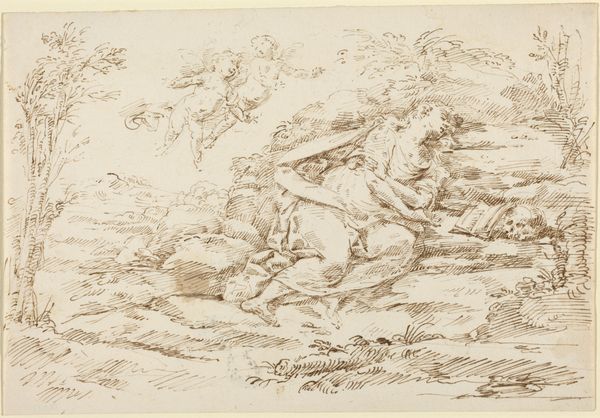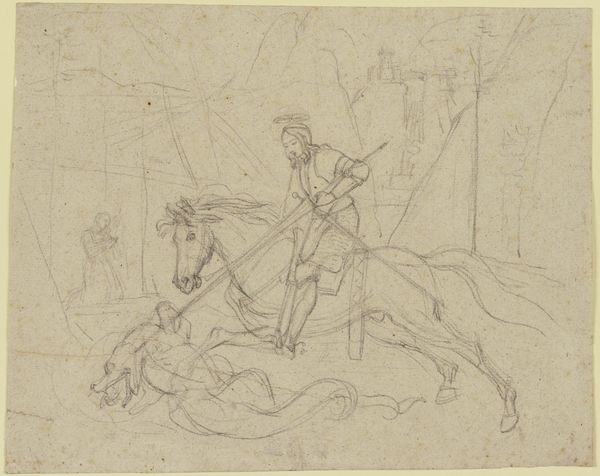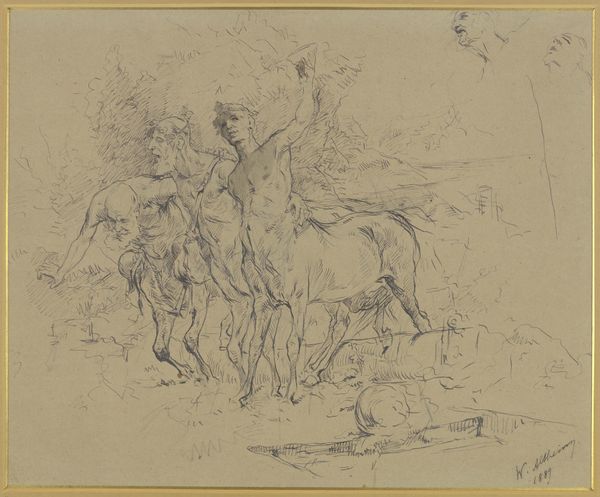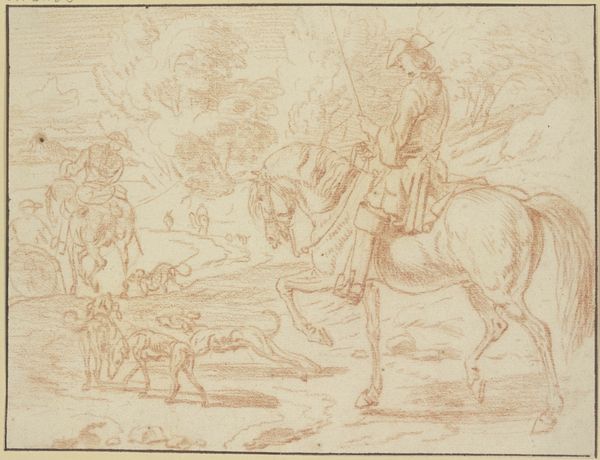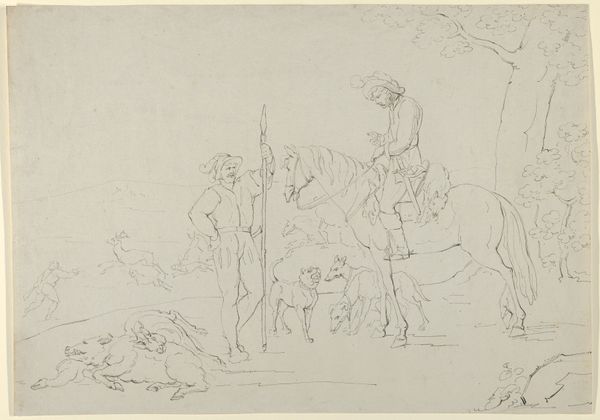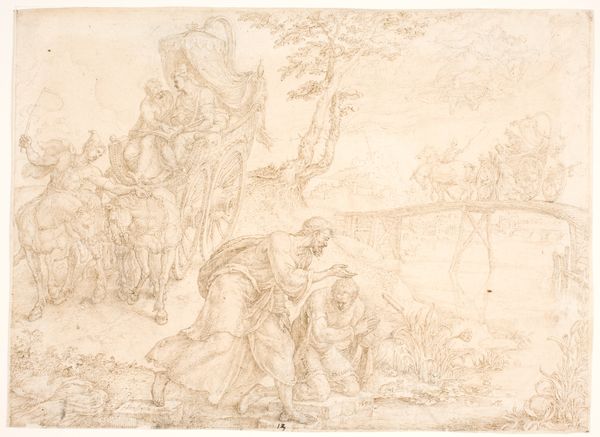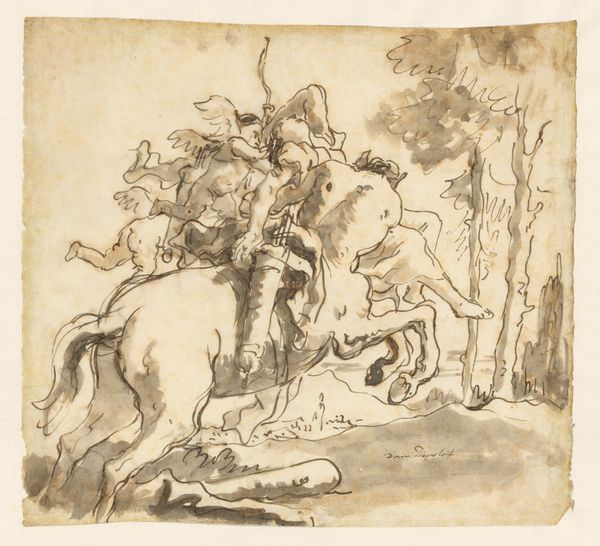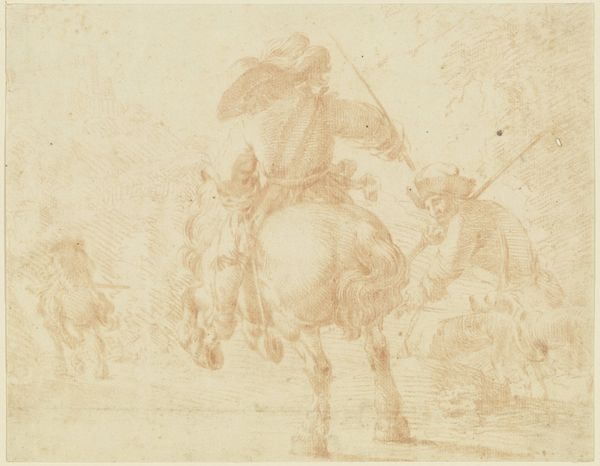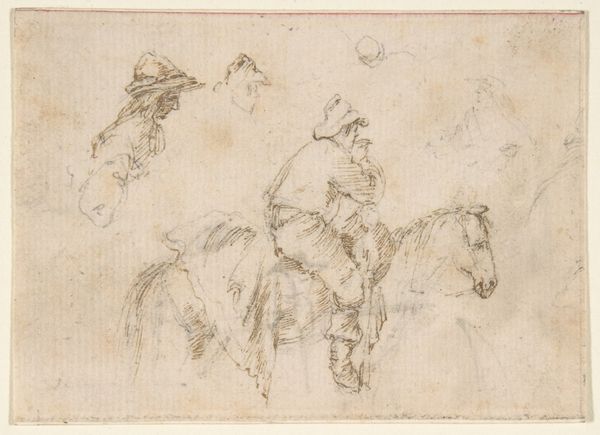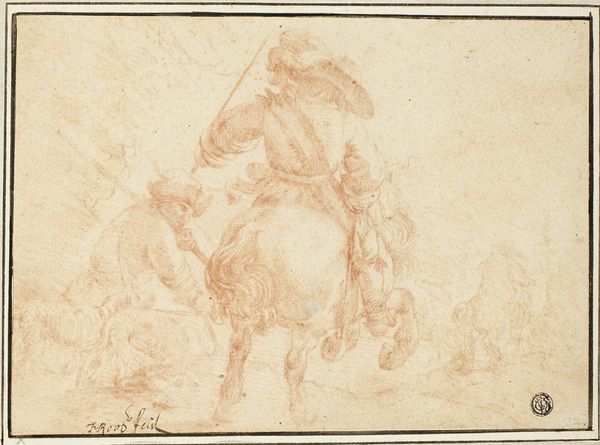
drawing, print, paper, pencil, graphite
#
drawing
# print
#
pencil sketch
#
landscape
#
figuration
#
paper
#
pencil
#
graphite
#
academic-art
Dimensions: 114 × 184 mm
Copyright: Public Domain
Curator: Here we have "Calvarymen Beside Tree," a pencil and graphite drawing on paper by John Frederick Tayler, date unknown, at the Art Institute of Chicago. Editor: Immediately striking is its airy, almost ghostly quality. The pale graphite lends a dreamlike impermanence, and the scene appears captured in fleeting, imprecise strokes. Curator: Yes, let's unpack that a bit. Tayler's landscapes frequently feature scenes of horsemanship, drawing upon conventions of military prowess and country leisure. Yet his portrayal avoids direct depictions of violence or hierarchy, focusing instead on moments of seeming tranquility. This is perhaps why that dreamlike feeling. Editor: There’s something undeniably classical, yet undone about it. Look at how the graphite is feathered, particularly to suggest mass of horse bodies. Almost suggestive, this is a gestural underpainting, revealing the skeletal forms underneath a polished exterior. But where’s the finality? The horses rendered like elegant yet fading memories of past military campaigns. Curator: Precisely, the academic treatment lends itself to a discourse surrounding how historical narratives often whitewash over lived experiences of conflict. Consider how the absence of distinct facial features—combined with a somewhat ambiguous background—broadens its applicability beyond singular figures and moments. We are prompted to reflect on a larger theme; those of the ordinary soldier, always present but rarely seen in our recorded histories. Editor: A valid point! I'm drawn, as well, to how the work challenges established artistic forms. The subdued tone minimizes hierarchical and confrontational narratives traditionally associated with calvary art. But maybe these very same 'omissions' or artistic strategies are the real reveal in how Tayler subtly, or not so subtly critiques structures and traditional historical representations. The lack of polish suggests a kind of resistance. Curator: Exactly, the deliberate sketch-like form creates an accessible entry point and demands interrogation by inviting the viewer to reflect upon what those conventional portrayals conceal or reinforce. Perhaps "Calvarymen Beside Tree", acts as more than just landscape or military art. Its strengths reside in questioning artistic and cultural forms simultaneously. Editor: So, it prompts us to engage, decode and discover new meanings of past artistic periods to broaden the social significance of art today! Fascinating. Curator: Absolutely, let's move on to the next piece.
Comments
No comments
Be the first to comment and join the conversation on the ultimate creative platform.


